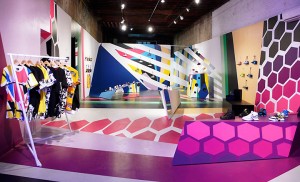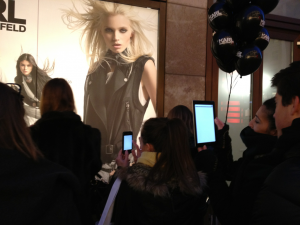By Doug Stephens
The concept of pop-up retail has been around for more than a decade. Vacant, a company out of Los Angeles, California is credited with pioneering the concept of pop-up shops in North America, after seeing similar concepts in Tokyo. They observed that Japanese consumers would sometimes line up for hours to buy limited edition goods. Once stock was sold out, the store would simply close until new stock arrived. This led Vacant to innovate the current model for pop-up, whereby stores would open for a defined period and then simply close, only to pop up later in a different location.
Until 2007 however, pop-up shops, while intriguing, were regarded largely as a novelty. The retail industry remained dominated by the foundational precept that stores were more permanent things. The goal of most retailers remained long-term, favorable leases in locations with trusted consumer traffic levels. This was how retail was done and how it was won.
Popping Up Out of the Ashes
The economic collapse of 2008 brought new opportunities for pop-up retail. Landlords who were reeling from fallout in the commercial real estate market entertained previously unthinkable, short-term agreements for their space, paving the way for a host of temporary retail installations. From Los Angeles to the mean streets of New York, the economic meltdown spurred a brilliant series of unique and daring pop-up concepts.
Above all else, these concepts seemed to breathe new life into a retail industry that had become fat and lazy, in the days leading up to the financial crisis. Retail had too long depended on excess consumer spending to buoy demand. Only when the bottom fell out of the market was it apparent just how unremarkable most retail had become.
In a sea of sameness, these unique and fleeting pop-ups caught the attention of consumers and made retail interesting again.
From Novelty to Strategy
Today, pop-up has become a legitimate channel strategy. Everyone from Walmart to Hermes has turned to these temporary formats to reach consumers where their full-line stores couldn’t.
Entire cities have embraced the concept of pop-up retail as a means of revitalizing urban neighborhoods. One example, Oakland California’s Pop Up Hood concept, offered 6 months of rent-free space to independent merchants to test out their retail concepts in designated parts of Oakland.
Even entertainment moguls Jay-Z and Kanye West opened a pop-up shop last year in New York City to commemorate the release of Watch the Throne. The store was open for one weekend only.
Technology is also fueling more creative approaches to pop up. Augmented reality applications are transforming inanimate spaces into engaging consumer buying portals – trips through the looking glass. Net-A-Porter’s recent launch of its Karl Lagerfeld line, whereby the outside of the store became a living interaction point for mobile device wielding consumers, is one such recent example.
Commercial Real Estate Redefined
What these and other concepts point to is an historic move away from retail being solely about established patterns of consumer traffic and purchase intent based on familiarity. The new consumer is seeking surprise and excitement from retail and is in many ways returning to its pre-industrial revolution roots and the concept of the travelling market.
For the commercial real estate industry, the writing may be on the temporary wall. The success of pop-up retail signifies the need for less permanent real estate overall. It’s logical to expect more retail chains to move to a mix of flagship (got to be there) locations and opportunistic, temporary installations to create excitement and capture sales. The commercial real estate professional of the future may be relied upon as much for their keen sense of guerilla marketing instinct as they are for their knowledge of the market overall.



